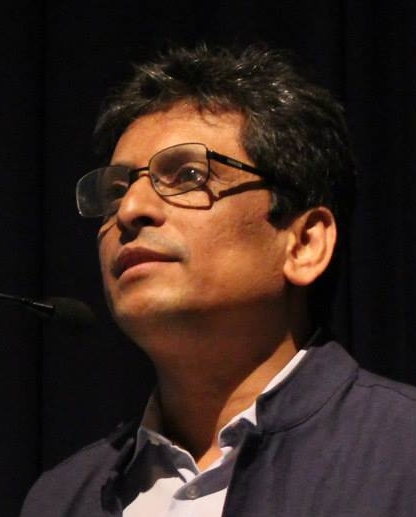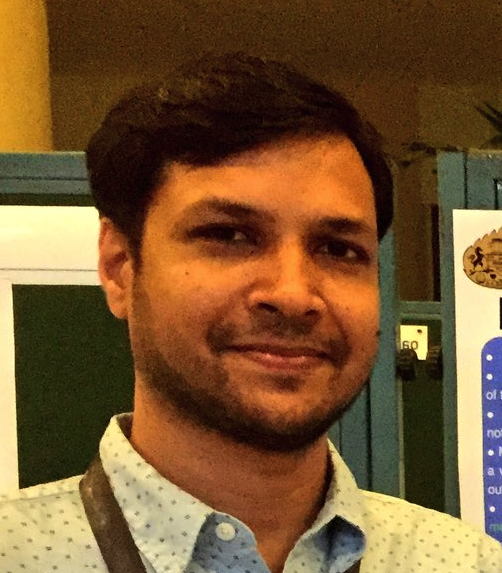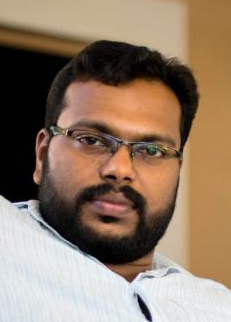- An international research team led by Dr. Surajit Paul of Savitribai Phule Pune University (SPPU) who is a Visiting Associate of IUCAA, Pune has for the first time revealed the entire process of production of Cosmic rays in the Galaxy Clusters.
- By creating many realizations of our Universe on IUCAA's High Performance Supercomputing system meant for the use of Indian Universities, this research closely studied the collisions of massive clusters of galaxies, which provided important insights into the long-standing puzzle of non-detection of Gamma rays from the clusters by understanding their brightest Cosmic ray injection phases. This research has recently been published in 'Monthly Notices of Royal Astronomical Society, London' (MNRAS, 2019,vol.488, no.1,page 1301-319; https://doi.org/10.1093/mnras/stz1785).
- No scientific observation till now has conclusively identified galaxy clusters as the high energy Gamma-ray sources, even with the most sensitive Gamma-ray telescopes in the world such as FERMI-LAT, HESS, MAGIC, etc. The non-detection was either explained by low resolution and sensitivity of the available instruments or due to the inadequate understanding of the particle acceleration mechanisms. But, they found out that the problem lies with the wrong choice of targets for deeper studies.
Galaxy clusters are the largest known objects in the universe with a size of about 1020 km and mass of 1045 kg that consists of thousands of galaxies like milky-way. These structures form through the various energetic process such as gigantic mergers of clusters, the known most energetic process in the Universe expected to produce extremely high energy particles such as X-rays, Gamma-rays etc. Theoretically, thus they are largest particle accelerators in the universe and reservoir of Cosmic rays of highest energies of around 1019 eV.
This important research was possible because of the availability of the required huge computational facility of High-Performance Computing of IUCAA. Dr. Paul and his former Ph.D. student Dr. Reju Sam John, earlier from University of Pondicherry and now a postdoctoral research fellow at IUCAA said, “It means a lot when you produce cutting-edge science after extensive use of your own systems available in national research institutions like IUCAA. This experience strengthened our confidence to test and build the indigenous capabilities to meet global standards and go beyond.”
Dr. Somak Raychaudhury, Director, IUCAA said, “The Earth receives some very high energy particles called cosmic rays, which bombard the Earth's atmosphere, and the most energetic ones reach the surface of the Earth. We have been studying these for the past century, and we know that many come from the Sun. However, the source of the highest energy particles has always been a mystery, and it is clear that they originate in the most energetic phenomena in the Universe. I am glad that our computers, such as the ones at IUCAA Pune, are now powerful enough that simulations of the highest energy events in the Universe can be performed, to check whether these ultra-high-energy particles are coming from them.”
Significance of this research:
Dr. Paul's team has implemented this theory in the computer codes to compute the emitted power of cosmic rays from the galaxy clusters that gave a new insight to the problem of non-detection of Gamma-rays from these sources. They said, “the problem lies with the wrong choice of targets for deeper studies made so far. We know very little about the energy evolution in these systems. So, studying the complete event of energy evolution during the cluster formation is absolutely necessary to pinpoint where to look into”. Therefore, the results from Dr. Paul's study intrigue further investigation on making proper selection strategies for a successful Gamma-ray detection from clusters and thus giving important insight into this long-standing puzzle of non-detection of Gamma rays in clusters.
More about the role of IUCAA HPC facility used in this research:
Research group led by Dr. Paul processed their codes in the IUCAA HPC facility and produced the highest ever resolved cosmological simulations in India. This type of simulation is also among the top few in the world in the context of study of formation of Large Scale structures existing in the universe. The highest resolution realizations used for this study took about 3 months with 1000 CPU's working in parallel. In other words, with a single high-end workstation it would have taken 250 years to compute a single such computer realization of a large volume of the universe.
About Research Paper:
(a) Title: Manufacturing cosmic rays in the evolving dynamical states of galaxy clusters
DOI: https://doi.org/10.1093/mnras/stz1785 (link accessible to MNRAS subscribers)
Full Text: arXiv:https://arxiv.org/abs/1803.04445
Full Text: arXiv:https://arxiv.org/abs/1803.04445
(b) Figures :

Figure 1: Simulated Galaxy cluster in formation (after about 1.5 Gyr of a merger), a volume rendering plot of density of a (10 Mpc)3 volume.
(c) Research Team
Authors:
Reju Sam John 1,2,3, Surajit Paul 1,2,5, Luigi Iapichino 4, Karl Mannheim 5 and Harish Kumar 3
- Inter-University Centre for Astronomy and Astrophysics, Pune, 411007, India
- Department of Physics, Savitribai Phule Pune University, Pune, 411007, India
- Department of Physics, Pondicherry Engineering College, Puducherry, 605014, India
- Leibniz-Rechenzentrum der Bayerischen Akademie der Wissenschaften, Boltzmannstr. 1, D-85748 Garching b. Munchen, Germany
- Lehrstuhl für Astronomie, Institut für Theoretische Physik und Astrophysik, Universität Würzburg, Emil Fischer-Str. 31, D-97074 Würzburg, Germany
(d) Acknowledgements
This research was funded by DST-SERB Young Scientist Fellowship scheme awarded to Dr. Surajit Paul (Project code: SR/FTP/PS-118/2011) and major research facility of HPC provided by IUCAA.
(d) Acknowledgements
This research was funded by DST-SERB Young Scientist Fellowship scheme awarded to Dr. Surajit Paul (Project code: SR/FTP/PS-118/2011) and major research facility of HPC provided by IUCAA.
Research contacts:
* please change _at_ to @
 |
Prof. Somak Raychaudhury Director, Inter University Center for Astronomy and Astrophysics, Tel.: +91-20-25604-231 (Off.) E-mail: somak_at_iucaa.in |
 |
Dr. Surajit Paul Assistant Professor at Savitribai Phule Pune University (SPPU), Pune and Visiting Associates at Inter University Center for Astronomy and Astrophysics, Tel.: +91-9405510226 (Mob.) E-mail: surajit_at_associates.iucaa.in |
 |
Dr. Reju Sam John Post Doctoral Fellows, Inter University Center for Astronomy and Astrophysics Tel.: +91-20-25604- 208 (Off.) & +91-7020103007 (Mob.) E-mail: reju_at_iucaa.in |

